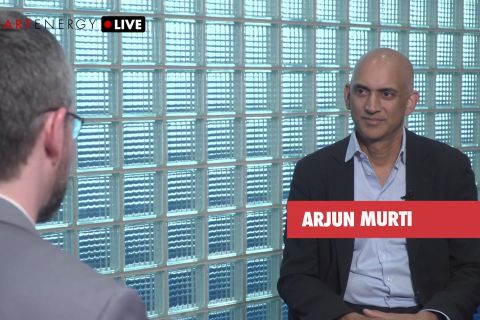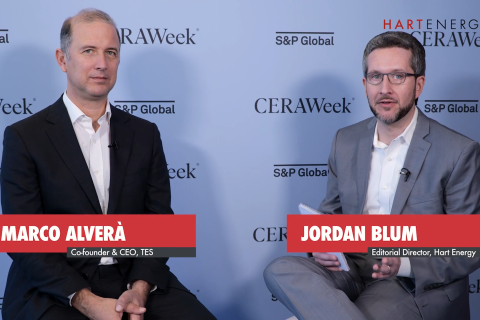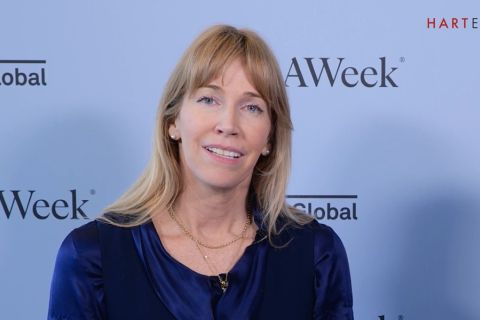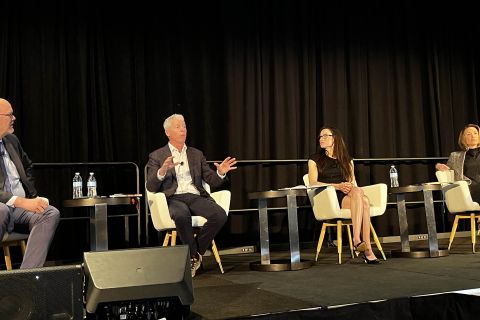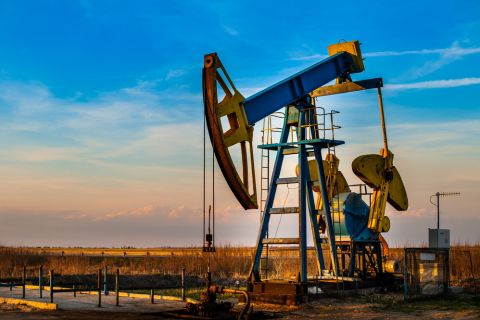How much longer can this go on? Now that results for 2004 are in, we know the rising tide lifted nearly all boats last year. Despite that, a lot of people are waiting for the other shoe to drop. I don't think it will. Last year the strong only got stronger. Take the case of EOG Resources, which grew production 10.4% and proved reserves 8% without making major acquisitions. It reported a return on equity of 25%, and a return on capital of 18%. EOG estimated growth through the drillbit will continue this year, with production forecast to go up another 13.5%. It announced a two-for-one stock split and a 33% bump in the dividend. Those are some great metrics to benchmark against. The weak got stronger too, as numerous companies restructured and found new capital. The very-small-caps made larger deals and found new investors, as we heard at the IPAA Small-Cap Oil & Gas Investment Symposium in Florida last month. The event attracted about 250 participants and will be held again next year, IPAA says. Retail equity investors and high-net-worth individuals are still in the game. Petroleum Development Corp. closed its first public drilling partnership of the year in two weeks in January, raising $40 million. In the past, PDC took several months to raise this much money. We hear of another company that raised capital through a PIPE (a private investment in public equity) in a day, without leaving the office. Companies think their good fortune will continue, if they keep their eye on the ball. For its 48 employees, ATP Oil & Gas announced a 2006 Volvo S-60 in every garage, if the company replaces 200% of 2005 production, raises output to an exit rate of 160 million cubic feet equivalent per day, and completes key developments in the Gulf of Mexico and North Sea. Private-equity funds keep raising money. Kayne Anderson was the latest, raising another $550 million. Every week we get word that another E&P executive has started a new firm to tap into that capital. The U.S. rig count is at 1,280-the highest it's been since 2001. Are there any skeptics among us? You bet. Unless commodity prices come down some this year, the current froth in the market will only get worse, says one financial intermediary. On the other hand, the economics of drilling are good now, even though equipment and service costs are rising. Just yesterday a man who has been in the industry for 20 years expressed his doubts, saying something we hear often: "We all know prices have to come down eventually. They always do." But prices have not come down much and what analysts define as "normal" keeps rising. The amount of gas in inventories is 15% above the five-year average for this time of year due to a warm winter, yet prices have stayed above $5 per thousand cubic feet for months. Even the pessimistic analysts think oil prices cannot go much below $35 in the long term. Later this year, the Strategic Petroleum Reserve along the U.S. Gulf Coast is to reach full capacity for the first time, holding 700 million barrels of oil. Assuming the federal government doesn't expand capacity, and thus stops buying oil, can U.S. demand soak up the barrels that were diverted to the SPR? A report from Douglas-Westwood Ltd., the U.K. consultant, says the world faces oil price increases for some time due to supply limits and demand increases. "Although 99 countries have or can produce significant oil, 52 of them, including the U.S., are already well past their peak (greater than five years) whilst another 16, including the U.K., Norway, Australia and China, are at peak or will reach it soon. All the remainder will see peaks in the next 25 years." By 2008, the firm says, OPEC will have to increase its daily production by 1- or 2 million barrels to meet new demand and offset non-OPEC declines. Speaking at the annual Cambridge Energy Research Associates conference in Houston last month, the CEOs of Saudi Aramco and ChevronTexaco voiced concern about securing enough energy for the future. Over the long term, the world will have to rely on a mix of oil and alternative fuels, said Abdallah S. Jum'ah, Saudi Aramco CEO. He outlined four areas requiring quick attention: more upstream investment, global refining capacity, improved environmental technologies, and investment in infrastructure. He reiterated Saudi Aramco's strategy of maintaining surplus production capacity of 1.5- to 2 million barrels a day above actual production, which itself is being gradually increased. ChevronTexaco CEO David O'Reilly said he now thinks the U.S. needs an energy policy because it will be competing with other nations for energy. Obtaining reliable supplies will be critical to sustaining economic growth, he said. He cited gas, coal, nuclear power and energy-savvy trade and diplomacy as key fundamentals.
Recommended Reading
Exclusive: Arjun Murti Talks Energy Transition, the Role of Oil, Gas in Meeting Energy Needs
2024-02-16 - Partner at Veriten Arjun Murti gives his perspective on global energy needs and addresses EV adoption in the U.S. in this Hart Energy LIVE Exclusive interview.
Exclusive: TES CEO Sees Electric Natural Gas as a Trillion Dollar Market
2024-03-26 - Marco Alverà, the co-founder and CEO of TES, details how electric natural gas from green hydrogen is a cheaper and easier to produce fuel and shares insight on its e-NG partnership with TotalEnergies, in this Hart Energy Exclusive.
Schneider Electric’s Heather Cykoski: Infused AI is Everywhere
2024-04-09 - Schneider Electric puts sensors in the technology it provides customers, creating the ability to gather data, predict operations and drive efficiency.
Amid Climate Scaremongering, Energy Execs Urge Engagement, Realism
2024-02-06 - From shale boom to net zero goals, industry experts grappled with the contradictions facing the energy industry during SPE’s Hydraulic Fracturing Technology Conference.
‘Growth Story’ for Oil: Rice's Kenneth Medlock on Demand Trends
2024-03-05 - Economics drive oil demand, not politics, Rice University’s Kenneth Medlock said during the International Drilling Conference and Exhibition in Galveston.

